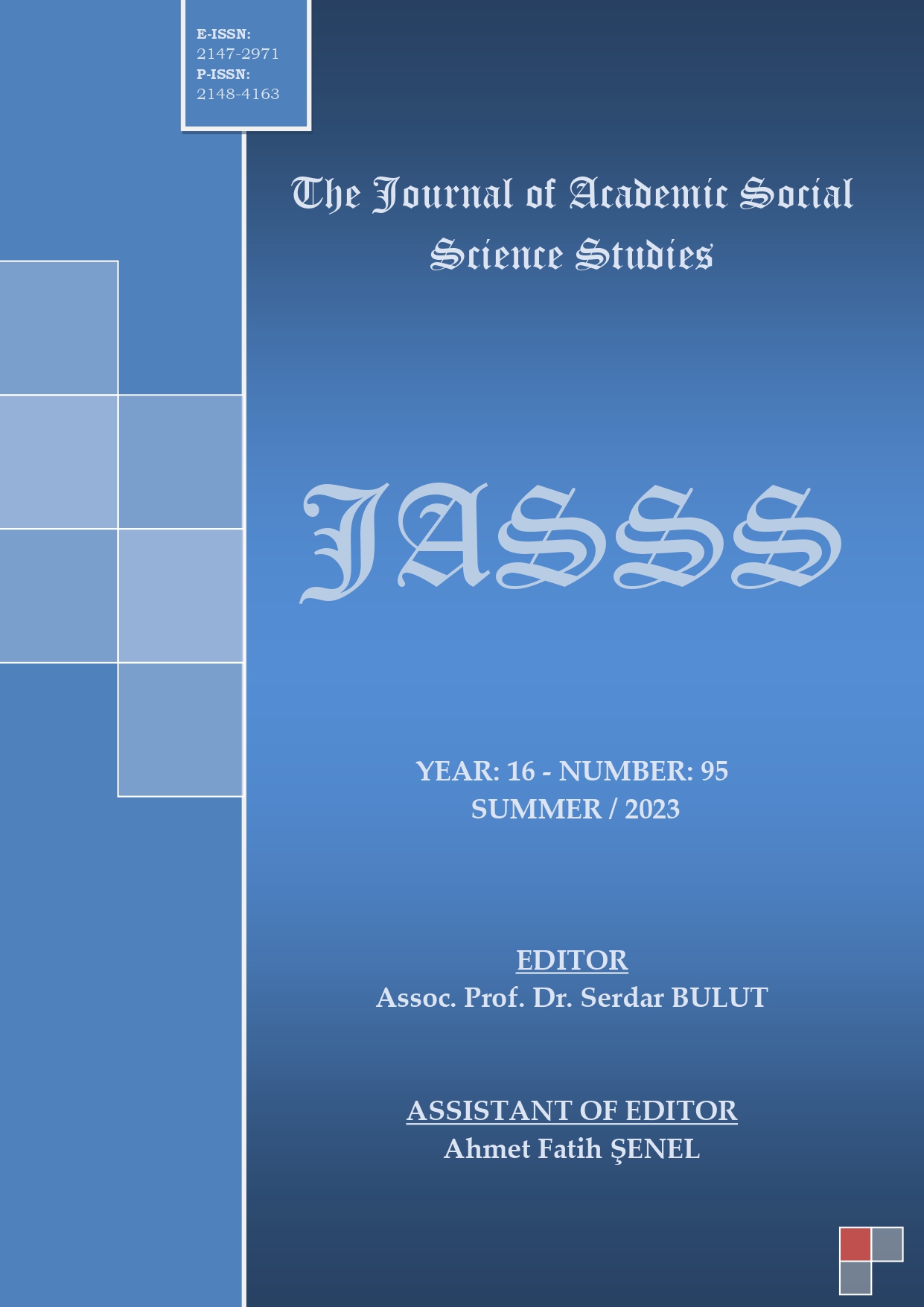Author :
Abstract
Geç Ortaçağ Avrupası’nda sanat eğitimi, usta-çırak ilişkisine dayanmaktadır. Albrecht Dürer'in en ünlü çırağı olarak kabul edilen Hans Baldung-Grien (1485-1545), Dürer’in çalışmalarının da etkisiyle, benzersiz ve oldukça etkili cadı tasvirlerini içeren eserleriyle tanınmaktadır. Resimlerinde ve gravürlerinde Ortaçağ mecazlarına dair güçlü bir görsel ifade ortaya koymuştur. Hans Baldung-Grien’in “Cadıların Şabatı” (1510) adlı eseri, Alman gravür sanatının başyapıtlarından biri olarak kabul edilmektedir. Eser, Geç Ortaçağ Döneminde cadılara atfedilen ve cadıların çıplaklığıyla desteklenen sembolik bir anlatım sunmaktadır. Baldung'un ikonik büyücülük tasvirine yeni ve kışkırtıcı yorumlar sunan bu eser, geç ortaçağ ve erken modern dönemlerde sanat, kültür ve toplumsal cinsiyet ilişkilerini anlayabilmek için temel bir okuma niteliğindedir. Baldung'un “Cadıların Şabatı” adlı eserinin seçilmesinin temel nedeni, onun yalnızca şaşırtıcı sanatı ve görsel cesareti değil, aynı zamanda bugüne kadar kadın ve toplumsal cinsiyet konularında verilen mücadelelerin yüzyıllar önce ortaya çıkan bazı izlerini taşımasıdır. Araştırmanın temeli Baldung’un “Cadıların Şabatı” adlı eseridir. Ancak araştırmada Baldung’un cadı tasvirlerinin yer aldığı diğer eserlerine de yer verilmiştir. Cadıların çıplak olarak betimlenmesi, 16. yüzyıl sanatında sıklıkla karşılaşılan bir durum değildir. Bu anlamda Baldung'un bu sanatsal seçiminin oldukça yenilikçi olduğu söylenebilir. Baldung'un cadı konulu gravürlerini cadıların yalnızca bir temsilini yansıtmak için mi yoksa başka bir nedenle mi tasarladığı tartışmalıdır. Baldung, cadıları gerçekçi bir şekilde tasvir etmeyi mi amaçladı yoksa esere hiciv olarak mı bakılmalıdır? Araştırmayı çevreleyen tartışmalar, bu noktalara odaklanmaktadır.
Keywords
Abstract
Art education in late medieval Europe is based on the master-apprentice relationship. Considered the most famous apprentice of Albrecht Dürer, Hans Baldung-Grien (1485-1545) is known for his unique and highly influential depictions of witches, influenced by Dürer's work. He revealed a strong visual expression of medieval metaphors in his paintings and engravings. Hans Baldung-Grien's "Witches' Sabbath" (1510) is considered one of the masterpieces of German engraving. The work presents a symbolic narrative attributed to witches in the Late Medieval Period and supported by the nudity of witches. Offering new and provocative interpretations of Baldung's iconic depiction of witchcraft, this work is essential reading for understanding art, culture, and gender relations in the late medieval and early modern periods. The main reason Baldung's work “The Sabbath of the Witches” was chosen is not only because of its amazing art and visual prowess, but also because it bears some traces of the struggles over women and gender issues that emerged centuries ago. The basis of the research is Baldung's work "The Sabbath of the Witches". However, Baldung's other works with witch depictions were also included in the research. The nude depiction of witches is not a frequent occurrence in 16th century art. In this sense, it can be said that Baldung's artistic choice is quite innovative. It is debatable whether Baldung designed his engravings of witches to reflect only one representation of witches or for some other reason. Did Baldung aim to portray witches realistically, or should the work be viewed as irony? The controversy surrounding the research focuses on these points.





